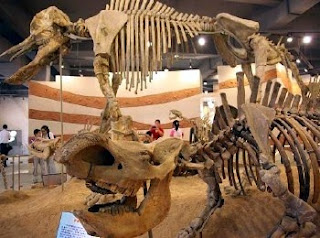Close to the Guiyuan Buddhist Temple Cuiwei Road Wuhan
There are eight
indoor exhibition halls displaying more than 3,000 samples of rocks of a wide
variety of kinds. Fancy rocks such as chrysanthemum, Peony, Lingbi and crystal
stones, fossils and many others will satisfy your curiosity. All the rare rocks
have been collected from all over China ,
except for one piece that is said to be from Malaysia National Stone
Museum
The National Stone Museum
In China Europe and has
developed to one of international fashion. Statistics shows that there are at
least 2000 stones aficionados all over the world.
An outdoor garden
displaying root carvings and bonsais next to the Muoshui Lake Guiyuan
Temple
For more
information, please visit www.top-chinatour.com





No comments:
Post a Comment